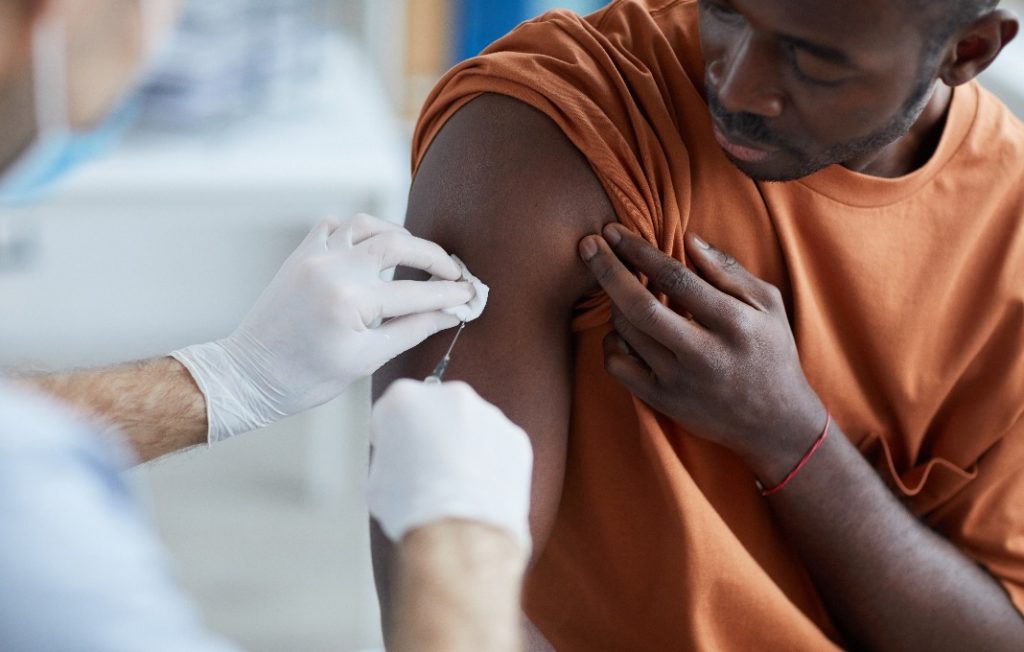 There’s no question that employers have a stake in Covid-19 vaccinations. Greater numbers of vaccinated employees keep workplaces and communities safe, decrease absence, and help maintain the momentum of our economic recovery. Employers are considering what role incentives can play in increasing vaccination rates. Paid time off for vaccination and time to recover from any side effects are likely to reduce vaccination barriers. Financial incentives are likely to have a small impact at best, and employers should avoid them.
There’s no question that employers have a stake in Covid-19 vaccinations. Greater numbers of vaccinated employees keep workplaces and communities safe, decrease absence, and help maintain the momentum of our economic recovery. Employers are considering what role incentives can play in increasing vaccination rates. Paid time off for vaccination and time to recover from any side effects are likely to reduce vaccination barriers. Financial incentives are likely to have a small impact at best, and employers should avoid them.
• Provide paid time off.
Offering paid time off for those who get vaccinated addresses a root cause of vaccine hesitancy for many who are not opposed to vaccination but worry about potential income loss or adverse performance review. Whether for vaccination itself or time to recover from side effects, providing paid time off eliminates the trade-off between their job and their susceptibility to a potentially deadly virus. Many of those at highest risk of being infected with Covid at work are hourly workers who can least afford a smaller paycheck or losing their job.
Additionally, shift workers often lack the scheduling flexibility to get two immunizations three to four weeks apart. Providing flexible paid time off for vaccination sends a powerful signal to managers to encourage those they supervise to take the time off necessary to be immunized.
Payment for time away from work for vaccination can be easily administered through regular payroll and is likely to be perceived as “fair” by all, even those who choose not to be vaccinated. The federal government will defray the cost of this for small businesses, too. The American Rescue Plan includes a tax credit to underwrite the cost of paid time off for vaccination for companies with under 500 employees.
• Steer clear of cash payments.
Many employers are considering whether to provide cash payments to their employees to encourage them to be vaccinated. The value of getting employees vaccinated is high, so why not pay employees to protect themselves, the community, and the workplace? Offering financial incentives is unlikely to compel higher rates of vaccinations, and employers would do well to avoid them.
There are few published studies of the impact of financial incentives on vaccine uptake, and most of these are not done in the context of employment. Studies have shown mixed results. Researchers found an increase of 9.4% in vaccination rates with a small employer financial incentive coupled with a robust communication effort – the financial incentive was not studied separately. A separate test of a mobile app to encourage vaccination showed that adding a financial incentive to messaging did not increase vaccine uptake. Recent studies that show that some would be more likely to seek a Covid vaccine for a $100 incentive find that the incentive would make others less likely to get vaccinated.
Employers considering cash incentives beyond payment for time lost from work will have the unenviable task of finding an elusive and perhaps non-existent “sweet spot” of the optimal incentive amount. Too small an incentive might not garner sufficient employee attention, while too large an incentive could inadvertently signal that Covid vaccines are undesirable. Employees are accustomed to receiving incremental cash payments as a reward for a risky or undesirable undertaking, like working on holidays or performing dangerous tasks. It would not be wise to equate the vaccine with hazard pay. Additionally, there is probably no amount of financial incentive that would, by itself, convince those who are adamantly opposed to vaccination. Therefore, financial incentives are not likely to permanently obviate the need for mandates in work settings where unvaccinated workers can pose a mortal threat to others.
Administering financial incentives for those who have been vaccinated can be expensive and burdensome. Some employers may try to add this incentive to an existing wellness incentive program, but these rewards are often paid many months after the activity and are therefore ineffective at promoting the desired behavior. Large incentives could also fall afoul of wellness incentive rules under the Affordable Care Act, which limit total incentives to less than 30% of the cost of employee health care premiums.
Employers that offer financial incentives to employees who have not yet been vaccinated would likely need to pay the incentive retroactively to those who already have gotten their shots to avoid a perception of unfairness. This will make the financial incentives substantially more expensive than it might seem. For instance, if a company with 100 employees offers a $100 incentive for vaccination and boosts its vaccination rate by 10 percentage points from 70% to 80%, the incentive cost will be $8,000 for an additional 10 vaccinated employees as 80 employees will each receive a $100 incentive. The cost of the incentive program would be $800 per incremental vaccinated employee. These resources might be more effective at increasing vaccination rate if used to improve communications, provide education on the vaccine’s safety, coordinate appointments, or arrange on-site vaccination.
Providing a cash reward to promote a health behavior could also diminish intrinsic motivation going forward, especially if acceptance of the behavior was high before the reward was put in place. Therefore, employers providing financial incentives for vaccination now should be prepared to maintain financial incentives if booster shots are necessary in subsequent years.
The big picture: Vaccine best practices for employers
1. Be sure employees face no risk of financial loss for being vaccinated. Cover the vaccine administration fee in both medical and pharmacy benefits. Give employees paid time off and scheduling flexibility for vaccination and to recover if they feel ill immediately after vaccination.
2. Make getting vaccinated convenient. Consider providing assistance to employees and their families to schedule vaccination appointments. Larger workplaces whose workers are not remote can offer on-site vaccination now that the shortage of vaccines has eased.
3. Educate employees about the importance and the safety of the vaccination to help employees make their vaccination decision. Many will roll their sleeves up for the vaccine when they realize their friends and coworkers are enjoying the benefits of being vaccinated.
4. Evaluate the impact of programs to encourage vaccination to assess effectiveness and the need for additional measures. Employers can assess vaccination rates by tracking time off for vaccination, if offered. Counting administrative fees paid can serve as an indicator of employee interest in vaccination, even if they undercount those who are vaccinated.
Increasing Covid-19 vaccination rates will prevent illness, save lives and allow us to continue to reopen our economy. Workplaces with high vaccination rates will have fewer Covid-19 infections. They will be able to return more workers to the workplace sooner and avoid quarantines when there is a workplace exposure. Employers can play an important role in protecting their business, their communities and their people by using effective tools to encourage vaccinations.
